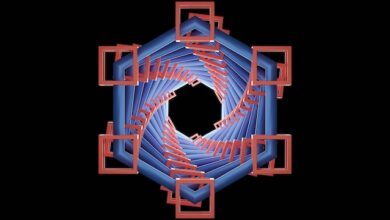Bitcoin Mining: How Does it Work?

Bitcoin (BTC) employs a public ledger called the blockchain, which miners add records of transactions to. One of Bitcoin’s most critical components, it eliminates what some refer to as the “double-spend” problem.
The double-spend dilemma refers to the necessity to agree on transaction history. The mathematical evidence of Bitcoin ownership is made possible by public-key cryptography. However, cryptography alone cannot guarantee that a coin has not already been delivered to another receiver.
It takes a lot of time, money, and effort to mine bitcoins. Many cryptocurrency investors are attracted to mining because it rewards them with cryptocurrency tokens in exchange for their efforts.
What Is the Process of Bitcoin Mining?
Using financial incentives, mining and specifically blockchain mining provide a safe and reliable way to store data. Third parties who order transactions are financially rewarded for operating ethically in a decentralized manner. As long as the majority of people are honest, every act of dishonesty costs money.
It’s possible to prove the correct sequence of blocks in Bitcoin mining by using a specified amount of resources. Cryptographic hashes are commonly used to encode data and their mathematical properties are what drive this operation.
As a one-way encryption method, it is nearly impossible to decrypt hashes back to their original input data without testing each and every conceivable combination.
It takes a Bitcoin miner trillions of hashes per second to find one that meets the “difficulty” requirement. To satisfy this criterion, we need a hash value that is less than or equal to the difficulty value, which is a simple mathematic equation.
The hash generated by miners, which is used to identify each block, is built using the data in the block header. The Merkle root and the previous block’s specific hash make up the majority of the hash. This block’s Merkle root is another compiled hash that contains the signatures of every transaction in the block in question.
To put it another way, changing even a small part of a block would have a significant impact on the expected hash of the following block. The network would be protected from tampering if nodes immediately rejected this false version of the blockchain.
Since the system requires a specific level of difficulty, it makes sure that Bitcoin miners are actually putting in time and effort. The term “proof-of-work” is used to distinguish Bitcoin’s consensus protocol from other block-creation mechanisms. In order to attack the network, malicious actors must first re-create all of its mining power from the ground up. In Bitcoin, this would be a monstrous expense.
How Are Bitcoin Miners Paid?
When a Bitcoin miner successfully creates a new block, the network rewards them. Each block generates new Bitcoins, and the fees paid by users are also rewarded.
Since the block reward is 6.25 BTC as of May 2020, most of the money a miner makes comes from that reward. A halving of this amount every four years would leave Bitcoin depleted and the network’s security only reliant solely on transaction fees.
Only 80,000 Bitcoin will be available for mining in 2040, down from the current block reward of 0.2 BTC. It won’t be until the year 2140 when the final Bitcoin is mined that mining will come to a stop.
Conclusion
Nothing special about Bitcoin mining distinguishes it from any other form of currency mining. Risk and reward are both present. You can use this article as a jumping-off point for your own research into the two.




